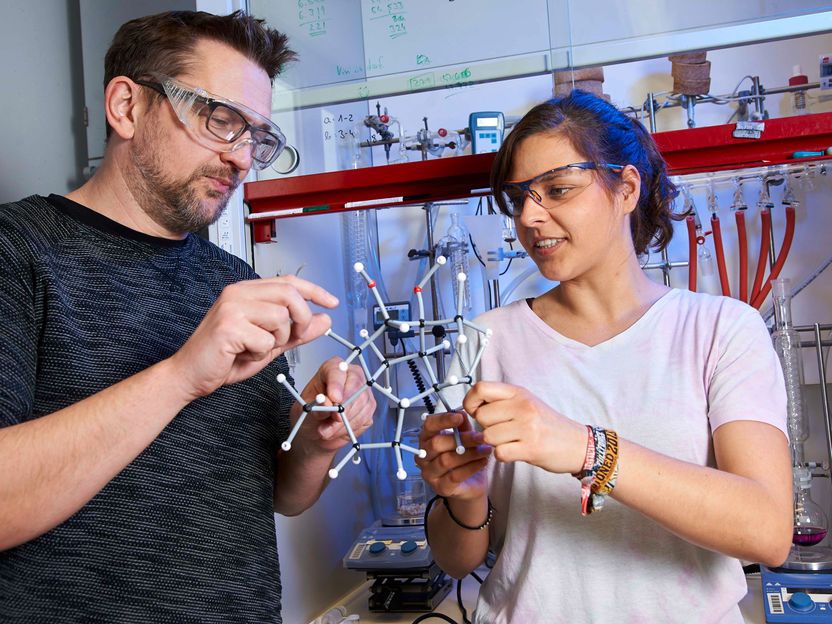New synthesis for a classic base note in perfumery
Functionalization of terpenes
Advertisement
Ambrocenide®, which imparts woody-amber base notes to perfumes, can be produced more efficiently in the future than before: with less effort and higher yields. The process for this was developed at the Leibniz Institute for Catalysis in Rostock, Germany, in collaboration with Symrise AG.

PD Dr. Thomas Werner with PhD student Vivian Stefanow - Reflections on the 3D model of the Ambrocenide®.
LIKAT/Nordlicht
Functionalization of Compounds
The findings are advancing not only industry but also research itself, in the area of "functionalization of terpenes," as Dr. Werner explains. Terpenes form a widespread class of natural substances. In addition to cedrene, which is the starting material for Ambrocenide®, they include menthol and steroids. The latter are components of numerous medicines, e.g. with anti-inflammatory effects. Chemists can give these compounds special properties by adding "functional groups. This is being researched worldwide.
Terpenes are usually extracted from plants, for example, but also from animal secretions. The woody, ambery notes in perfume were once produced from ambergris, a substance from the digestive tract of sperm whales, difficult to obtain and expensive. The synthesized Ambrocenide® comes close to ambergris with an intense, long-lasting scent. The starting material for the synthesis is a substance from the essential oil of cedars: Cedrene.
Weakness Selectivity
The chemical conversion of cedrene to Ambrocenide® conventionally proceeds in three stages. However, as is often the case in chemical reactions, the result is also other molecules of this product that lack this fragrance. These molecules have the same molecular formula - even the atoms are linked in the same way - but in a different spatial arrangement. "The industry partner wanted above all a selective reaction here, with which we could exclude the unusable variety from the outset," says Thomas Werner.
The new process developed jointly with Symrise AG is highly selective, reduces the number of reaction steps required and has a higher yield than the original process. Credit for this goes above all to a postdoc, Aiga Grandane, and a doctoral student, Vivian Stefanow, who is currently completing her dissertation on the subject.
Most read news
Other news from the department science

Get the chemical industry in your inbox
By submitting this form you agree that LUMITOS AG will send you the newsletter(s) selected above by email. Your data will not be passed on to third parties. Your data will be stored and processed in accordance with our data protection regulations. LUMITOS may contact you by email for the purpose of advertising or market and opinion surveys. You can revoke your consent at any time without giving reasons to LUMITOS AG, Ernst-Augustin-Str. 2, 12489 Berlin, Germany or by e-mail at revoke@lumitos.com with effect for the future. In addition, each email contains a link to unsubscribe from the corresponding newsletter.































































